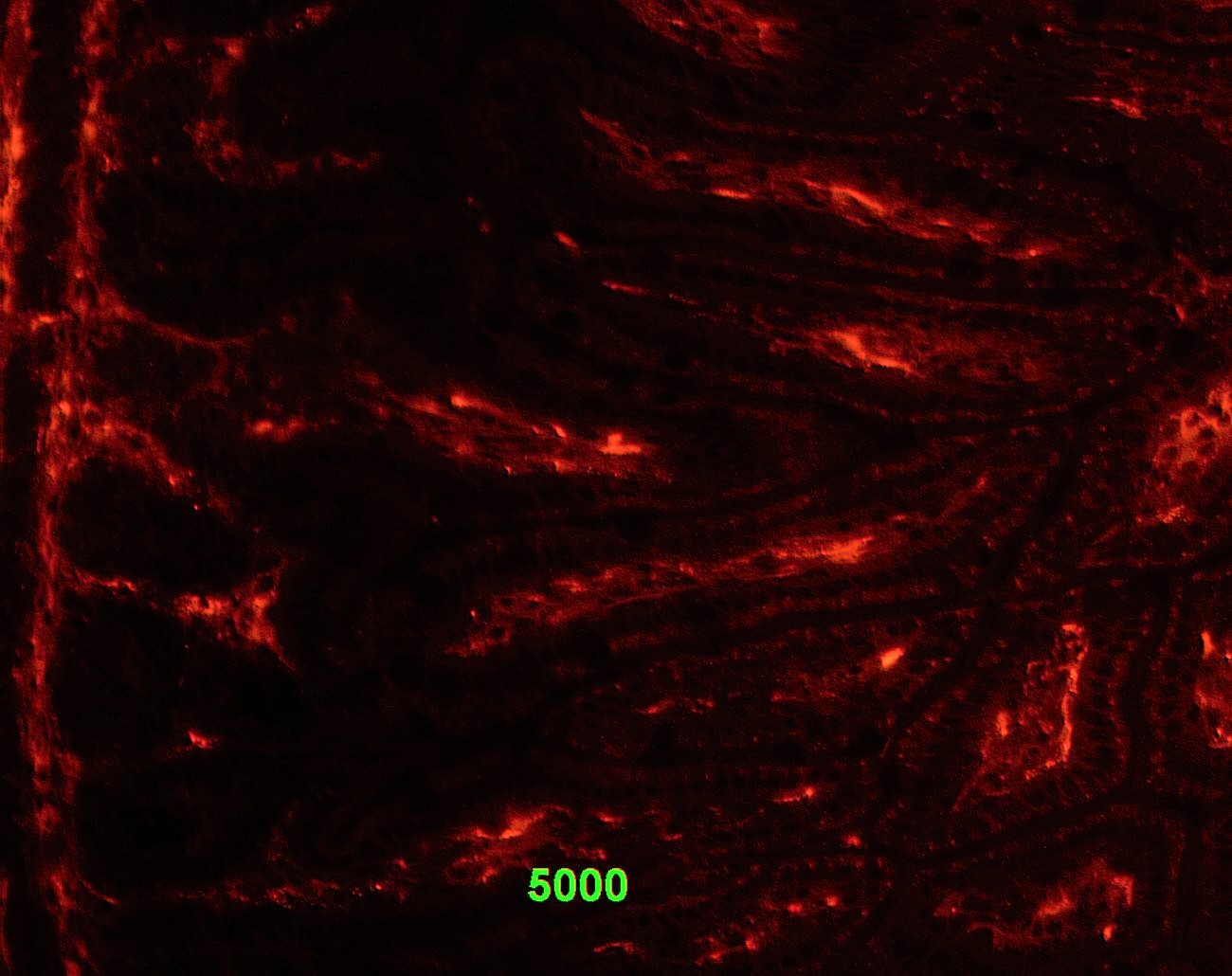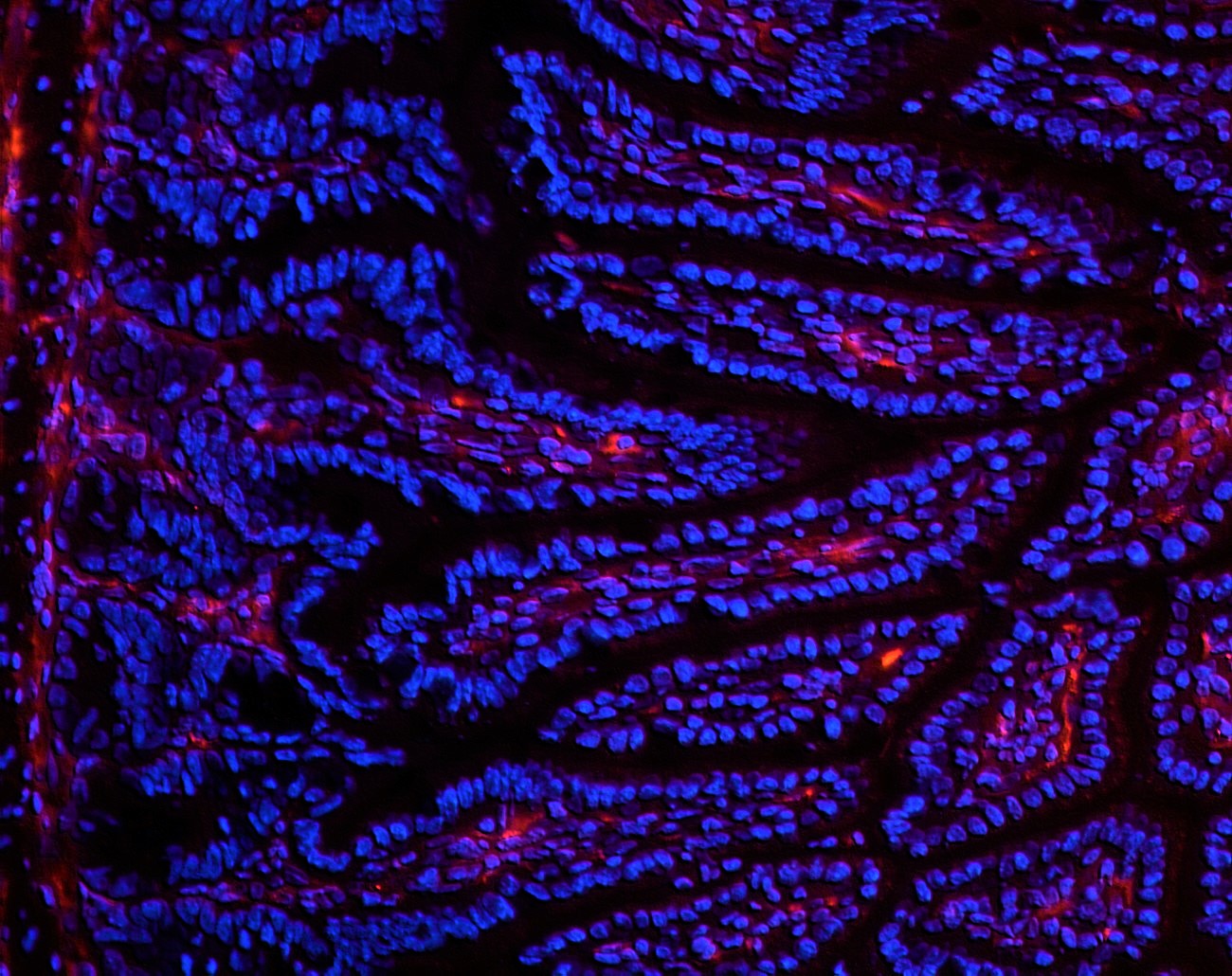
Mast Cell Activation Syndrome and Vitamin B12
-
Mast Cell Activation Syndrome (MCAS) is a disorder often associated with functional vitamin B12 deficiency.
-
There is little to no evidence that the syndrome is actually associated with "Activated Mast Cells"
-
Symptoms of the syndrome closely resemble symptoms of histamine intolerance.
-
MCAS is often associated with Autism Spectrum Disorder (ASD)
-
MCAS is often associated with Chronic Fatigue Syndrome (CFS)
-
Both ASD and CFS have been shown to be associated with functional vitamin B12 deficiency
-
Functional B12 deficiency in both ASD and CFS has been associated with functional B2 deficiency
MCAS
MACS is an ill-defined condition that is common in children with autism, and in those with Chronic Fatigue Syndrome (Theoharides etal, 2012; 2019). There appears to be little evidence that the condition is actually associated with non-specific or specific activation of mast cells. Analysis of symptoms reveals that the symptoms are very similar to those observed in persons with histamine intolerance (see below).
Symptoms "Associated" with MCAS
Typical symptoms of MCAS include
-
Flushing, itching, hives (like symptoms) pain.
-
Headaches, brain fog, anxiety depression, vertigo, irritability
-
Nausea, stomach aches, bloating, cramping, loose stools, leaky gut, dysbiosis
-
Nasal congestion, runny nose, sneezing, itchy eyes, wheezing
-
Hypotension, hypertension, tachycardia, POTS
-
Fatigue, food sensitivity
Symptoms Associated with Histamine Intolerance
Symptoms associated with histamine intolerance
-
Flushing, Nasal congestion, runny nose, sneezing, itchy eyes, wheezing
-
Headaches
-
Nausea, stomach aches, bloating, cramping, loose stools, leaky gut, dysbiosis
-
Diarrhea, bloating, abdominal pain,
-
Dizziness, heart palpitations, low blood pressure,
Inactivation of histamine
There are two major mechanisms of histamine inactivation
-
Inactivation by Diamino-oxidase (DAO).
-
Inactivation by methylation with Histamine-N-methylatransferase (HNMT).
Vitamin B12 deficiency and MCAS
Vitamin B12 deficiency has profound effects on inactivating histamine
First, functional B12 deficiency reduces the level of methylation in the body, and that then reduces the amount of melatonin that is produced (as it is a methylation product). Lack of melatonin production then affects the gut wall by reducing the maturation of the gut wall, thereby resulting in reduced production of gastro-intestinal enzymes such as DAO and HNMT, and hence there will be a reduced enzymatic capacity to inactivate histamine, and in addition, the lack of melatonin also greatly increases gut wall permeability due to over-production of gut serotonin (Ma etal, 2020; Ly etal, 2020; Chen etal, 2011). In this regard, it is known that levels of melatonin are reduced in people with CFS and ASD (Hua etal, 2020). See https://b12oils.com/melatonin.htm
Second, reduced activity of methyl B12 means that there is insufficient SAM for the enzyme HNMT to use in methylation of histamine.
The result is that histamine released from digestion of many foods causes many symptoms that resemble Mast Cell Activation, such as would occur in allergic responses.
Molybdenum deficiency and MCAS
A common preservative in foods is sulphite, and reactions to sulphites can "look like" those to food allergens. Sulphite is normally inactivated by the Molybdopterin-protein, sulphite oxidase. Hence in Molybdenum deficiency (which is very common in children with ASD), the children can also exhibit multiple food sensitivities. In addition, the Molybdenum deficiency can also cause functional B2 deficiency, which in turn will cause functional vitamin B12 These double deficiencies (Molybdenum and functional B12 deficiency) can then lead to broad-spread sensitivity to many different foods.
-
Flushing, itching, hives (like symptoms) pain.
-
Digestive symptoms - diarrhea, stomach cramps, vomiting, and nausea
-
Skin symptoms - red and itchy skin, rashes, and hives
-
Respiratory symptoms - wheezing, difficulty breathing, cough, chest tightness
-
Anxiety, paleness, and weakness
-
Anaphylactic shock - very rarely, a severe and fatal allergic reaction can cause low BP and extreme difficulty to breath, which might lead to loss of consciousness.
Sulfites are present in foods such as Parmesan cheese, mushrooms, and some
fermented foods. Preserved food and drinks such as wine, cider, beer, sausages,
soft drinks, burgers, and dried fruits are usually high in sulfites. Sulfite
might be hidden in salad dressings in the form of vinegar or bottled lemon
juice, in pizzas that use processed tomato sauce, and in olives, sausages, and
sauces. Sulfites are common in commercial super-market products such as breads
and rolls. It should be suspected if you purchase the products and they do no go
mouldy within a few days.
Gluten Intolerance and Molybdenum deficiency
A consequence of Molybdenum deficiency is that persons may react strongly to wheat-based products such as bread, because they use sulphites as preservatives. These food often are also supplemented with Iodine, folate, and vitamin B1. The reaction to the products, often leads to the concept that the person is gluten-intolerant and so they are mistakenly placed on a gluten-free diet. Such diets often use gluten-free flour, such as corn flour, rice flour, or potato flour. Such products, though do not need to be fortified (for some reason) and as such a person going "gluten-free" becomes more deficient in Iodine, Folate, vitamin B1, Selenium and iron, and can have increased levels of lead and arsenic. These deficiencies are significant enough to be identified in tests such as OAT and HMTA.
FPIES
FPIES (Food-Protein Induced Enterocolitis Syndrome) is an ill-defined condition that is claimed to be associated with an allergy to ingested foods in children. Skin testing for IgE against food allergens is, however, generally negative. The symptoms are very similar to those observed in persons with histamine or sulphite intolerance (see above), however, potentially the symptoms could be separated from sulphite intolerance due to different ranges of foods, that cause the two conditions.
Melatonin and gut health
Very high levels of melatonin are produced by the epithelial cells lining the gut wall, in those that are replete in functional B12, and imaging studies have shown large quantities of vitamin B12 to be present in the sub-epithelial cells that line the gut villi. (see below). Melatonin production in the intestine is 400-500 times higher than that seen in the pineal gland (Bubenick, 2001; 2002). It is synthesized from the precursor serotonin, however in B12 deficiency, over-production of gut serotonin occurs producing symptoms associated with IBS. Local production of serotonin in the gut has been shown in studies where the expression of tryptophan hydroxylase (the rate limiting enzyme in serotonin production) was found to occur in the normal enterocytes (gut epithelial cells) lining the epithelium of the gut wall (Meyer and Brinck 1999). Melatonin affects the regeneration and function of the gut epithelium, the lymphatic tissues of the immune system, as well as affecting smooth muscle function in the digestive tract (Bubenick, 2001), It has also been postulated that melatonin has a protective role in the prevention and treatment of colorectal cancer, irritable bowel disease, ulcerative colitis and gastric ulcers (Bubenick, 2002; Konturek et al, 2007; Thor etal, 2007; Kim etal, 2020).


Localization of vitamin B12 (Red) in the intestinal epithelium (Nuclei-Blue) 5000x
Foods high in histamine
-
fermented dairy products, such as cheese (especially aged), yogurt, sour cream, buttermilk, and kefir
-
fermented vegetables, such as sauerkraut and kimchi
-
pickles or pickled veggies
-
kombucha
-
cured or fermented meats, such as sausages, salami, and fermented ham
-
wine, beer, alcohol, and champagne
-
fermented soy products such as tempeh, miso, soy sauce, and natto
-
fermented grains, such as sourdough bread
-
tomatoes
-
eggplant
-
spinach
-
frozen, salted, or canned fish, such as sardines and tuna
-
vinegar
-
tomato ketchup
Other conditions associated with MCAS
Several other conditions are associated with MCAS, such as depression (SantaBarbara and Lobel, 2021).
References
Theoharides, T. C., Kavalioti, M., & Tsilioni, I. (2019). Mast Cells, Stress, Fear and Autism Spectrum Disorder. International journal of molecular sciences, 20(15), 3611. https://doi.org/10.3390/ijms20153611
T. C., Angelidou, A., Alysandratos, K. D., Zhang, B., Asadi, S., Francis, K., Toniato, E., & Kalogeromitros, D. (2012). Mast cell activation and autism. 34–41. https://doi.org/10.1016/j.bbadis.2010.12.017
a, N., Zhang, J., Reiter, R. J., & Ma, X. (2020). Melatonin mediates mucosal immune cells, microbial metabolism, and rhythm crosstalk: A therapeutic target to reduce intestinal inflammation. (2), 606–632. https://doi.org/10.1002/med.21628
Lv, W. J., Liu, C., Yu, L. Z., Zhou, J. H., Li, Y., Xiong, Y., Guo, A., Chao, L. M., Qu, Q., Wei, G. W., Tang, X. G., Yin, Y. L., & Guo, S. N. (2020). Melatonin Alleviates Neuroinflammation and Metabolic Disorder in DSS-Induced Depression Rats. , 1241894. https://doi.org/10.1155/2020/1241894
Chen, C. Q., Fichna, J., Bashashati, M., Li, Y. Y., & Storr, M. (2011). Distribution, function and physiological role of melatonin in the lower gut. World journal of gastroenterology, 17(34), 3888–3898. https://doi.org/10.3748/wjg.v17.i34.3888
Hua, X., Zhu, J., Yang, T., Guo, M., Li, Q., Chen, J., & Li, T. (2020). The Gut Microbiota and Associated Metabolites Are Altered in Sleep Disorder of Children With Autism Spectrum Disorders. Frontiers in psychiatry, 11, 855. https://doi.org/10.3389/fpsyt.2020.00855
Bubenik G. A. (2001). Localization, physiological significance and possible clinical implication of gastrointestinal melatonin. Biological signals and receptors, 10(6), 350–366. https://doi.org/10.1159/000046903
Bubenik G. A. (2002). Gastrointestinal melatonin: localization, function, and clinical relevance. Digestive diseases and sciences, 47(10), 2336–2348. https://doi.org/10.1023/a:1020107915919
Konturek, S. J., Konturek, P. C., Brzozowska, I., Pawlik, M., Sliwowski, Z., Cześnikiewicz-Guzik, M., Kwiecień, S., Brzozowski, T., Bubenik, G. A., & Pawlik, W. W. (2007). Localization and biological activities of melatonin in intact and diseased gastrointestinal tract (GIT). Journal of physiology and pharmacology : an official journal of the Polish Physiological Society, 58(3), 381–405.
Bubenik G. A.
(2008). Thirty four years since the discovery of gastrointestinal
melatonin. Journal of physiology and pharmacology : an official journal of the
Polish Physiological Society, 59 Suppl 2, 33–51.
Thor, P. J., Krolczyk, G., Gil, K., Zurowski, D., & Nowak, L. (2007). Melatonin
and serotonin effects on gastrointestinal motility. Journal of physiology and
pharmacology : an official journal of the Polish Physiological Society, 58 Suppl
6, 97–103.
Nicoloro
SantaBarbara, J., & Lobel, M. (2021). Depression, psychosocial correlates, and
psychosocial resources in individuals with mast cell activation
syndrome. Journal of health psychology, 13591053211014583. Advance online
publication. https://doi.org/10.1177/13591053211014583
Afrin, Lawrence B. Presentation, diagnosis and management of mast cell
activation syndrome. 2013. Mast cells.
Molderings GJ,
Brettner S, Homann J, Afrin LB. Mast cell activation disease: a concise
practical guide for diagnostic workup and therapeutic options. J. Hematol.
Oncol.2011;4:10-17.
Ikuko Mohri, Masako Taniike, Hidetoshi Taniguchi, Takahisa Kanekiyo, Kosuke
Aritake, Takashi Inui, Noriko Fukumoto, Naomi Eguchi, Atsuko Kushi, Hitoshi.
Prostaglandin D2-Mediated Microglia/Astrocyte Interaction Enhances Astrogliosis
and Demyelination in twitcher. The Journal of Neuroscience, April 19, 2006 •
26(16):4383– 4393.
Rogers MP, et al. Mixed organic brain syndrome as a manifestation of systemic
mastocytosis. Psychosom Med. 1986 Jul-Aug;48(6):437-47.
Meyer, T., & Brinck, U. (1999). Differential distribution of serotonin and tryptophan hydroxylase in the human gastrointestinal tract. Digestion, 60(1), 63–68. https://doi.org/10.1159/000007590
Kim, S. W., Kim,
S., Son, M., Cheon, J. H., & Park, Y. S. (2020). Melatonin controls microbiota
in colitis by goblet cell differentiation and antimicrobial peptide production
through Toll-like receptor 4 signalling. Scientific reports, 10(1), 2232.
https://doi.org/10.1038/s41598-020-59314-7
Copyright © 2021 B12 Oils. All Rights Reserved.
Reproduction in whole or in part in any form or medium without express written
permission is prohibited